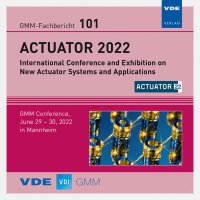A New Method to Monitoring the Curing of Filler Educts in Fibre Composites
Konferenz: ACTUATOR 2022 - International Conference and Exhibition on New Actuator Systems and Applications
29.06.2022 - 30.06.2022 in Mannheim
Tagungsband: GMM-Fb. 101: ACTUATOR 2022
Seiten: 4Sprache: EnglischTyp: PDF
Autoren:
Zirk, Kai-Uwe; Kemper, Markus; Kolhoff, Christoph; Poetzschke, Harald (PHWT – Private Hochschule für Wirtschaft und Technik, Fachbereich Mechatronik und Elektrotechnik, Diepholz, Germany)
Inhalt:
Fibre composite materials (FCM) are mixed materials consisting of strengthening fibres embedded in a filler matrix. For their production often (fluid or malleable) filler educts are reacted (e.g. by a polymerisation, or a cross-linking reaction, etc.). These reactions are called curing (curing reactions) resulting in fillers as their products. An incomplete curing threatens the functionality and safety of the produced fibre composites. But, a monitoring of curing is complex and often only possible locally and superficially at the surface of the developing fibre composite material. A simple and therefore cheap monitoring is needed and searched for to shorten process cycle times, therewith saving energy and costs. This is especially the case for the production of great and complex (and expensive) fibre composite material pieces, like windmill rotor wings, It should be based on the monitoring of characteristics which change strongly during a curing and are able to demonstrate the actual state of curing undoubtedly. The temporary course of the (partly high) temperature (T) and the changes in relative permittivity (epsilonr, especially due to a restricted mobility of molecules and charge carriers of the educts) are best suitable for the purpose. For the new method to monitor the curing process, electrically isolated laminar measuring element films containing LCR oscillators are placed between the fibres of the fibre composite material and embedded like the fibres before the curing. After curing of the filler the sensor films remain in the fibre composite material element. The stability of the elements is not compromised on account of the small size of the sensor films. During the curing the sensor LCR oscillators are excited inductively with an exciter inductor from the outside to free damped harmonic electric oscillations. Their temporal courses are the sensor signal which is detected (inductively coupled) by an external receiver inductor spool and comprises the characteristics resonance angular frequency (omegar) and the damping (damping exponent d) of the harmonic oscillations. From these characteristics the temperature (T ohmic resistance (R) amplitude damping (d)), and the relative permittivity (epsilonr electric capacitance (C) resonance angular frequency (omegar)) of the curing filler educts at the time points of measurement are calculated. The new procedure enables a continuous, integral (large-scale), contactless, passive monitoring in situ of the curing of filler educts during the production of fibre composite materials, even at moderate high temperatures, with simultaneous measurement of several relevant physical quantities, and without a significant disturbing impact on the developing filler and fibre structure. With the determination of courses of in situ characteristics within the developing fibre composite material an optimisation of the production process, as well as a better reproducibility of the production of fibre composite parts is deemed possible.


